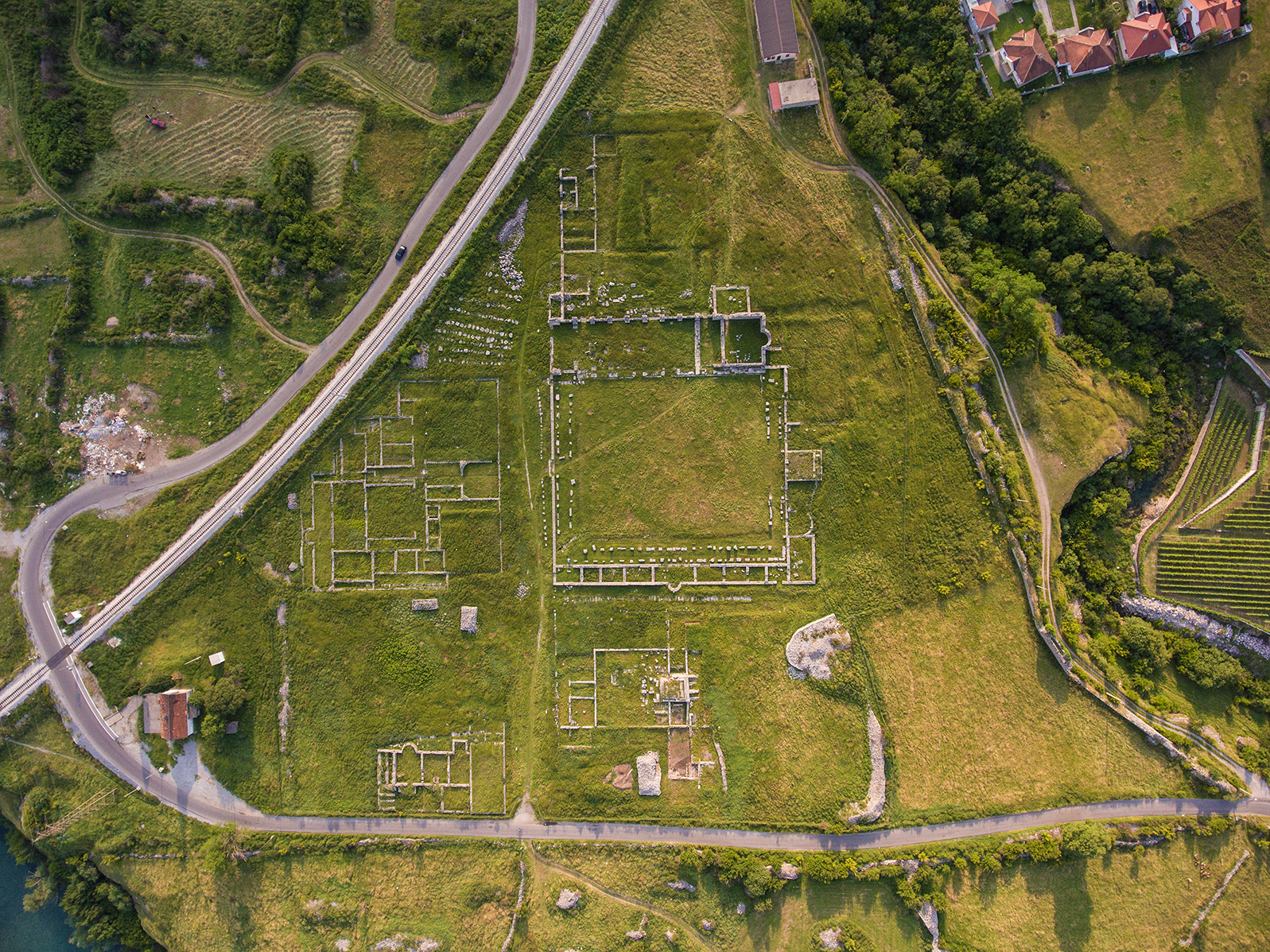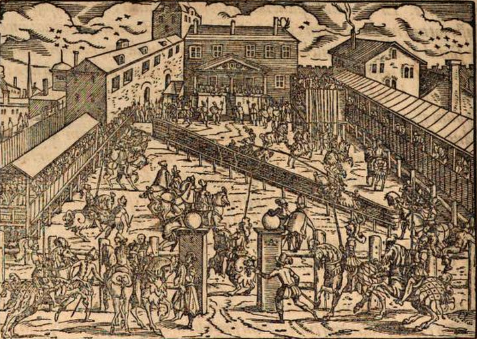|
Albanian Revolt Of 1911
The Malissori uprising or the Albanian revolt of 1911 was one of many Albanians, Albanian revolts in the Ottoman Empire and lasted from 24 March 1911 until 4 August 1911 in the region of Malësia (also spelled Malissori). Background The main headquarters of the rebels were in Podgorica and King Nikola provided weapons for the insurgents. King Nicholas promised to support Malësor with arms and to provide a shelter to their families before the revolt began. Although both king Nicholas I of Montenegro, Nikola and prince Danilo, Crown Prince of Montenegro, Danilo were assuring Ottoman ambassador that they are observing "the strictest neutrality" it was obvious that Kingdom of Montenegro was involved in this revolt. General Janko Vukotić, Vukotić organized passing out the weapon to the rebels. Nikola's strategy was to stimulate unrest in northern Albania and north-western Kosovo to the point where he could intervene and annex more territory for Montenegro. Most of contemporary ... [...More Info...] [...Related Items...] OR: [Wikipedia] [Google] [Baidu] |
Malësia
Malësia e Madhe ("Great Highlands"), known simply as Malësia (, ), is a historical and ethnographic region in northern Albania and eastern central Montenegro corresponding to the highlands of the geographical subdivision of the Malësi e Madhe District in Albania and Tuzi Municipality in Montenegro. The largest settlement in the area is the town of Tuzi. Name ''Malësia e Madhe'' is Albanian for "great highlands". It is simply known as ''Malësia'', or in the local Gheg Albanian, Gheg dialect, ''Malcía'' (). Elsie also describes the region as part of the Northern Albanian Alps. The tribes are commonly called "highlanders", , anglicized as "Malissori" or "Malisors". An Archaism, archaic term used by foreign travellers in the 1860s was "Malesians". Geography The region includes parts of the Accursed Mountains mountain range (known in Albanian as ) and hinterland of the Lake Scutari, with valleys of the Cem (river), Cem river. The Malësors (Albanian highlanders) live within ... [...More Info...] [...Related Items...] OR: [Wikipedia] [Google] [Baidu] |
Podgorica
Podgorica ( cnr-Cyrl, Подгорица; ) is the Capital city, capital and List of cities and towns in Montenegro, largest city of Montenegro. The city is just north of Lake Skadar and close to coastal destinations on the Adriatic Sea. Historically, it was Podgorica's position at the confluence of the Ribnica (Morača), Ribnica and Morača River, Morača rivers and at the meeting-point of the fertile Zeta Plain and Bjelopavlići Valley that encouraged settlement. The surrounding landscape is predominantly mountainous terrain. After World War II, Podgorica was first designated as the capital of Montenegro in 1946. At that time, it was renamed Titograd in honor of Josip Broz Tito, the leader of Yugoslavia. It served as the capital of the Socialist Republic of Montenegro within the Socialist Federal Republic of Yugoslavia until Montenegro's declaration of independence in 2006, after which it was reaffirmed as the capital of an independent Montenegro. The city's original name, Pod ... [...More Info...] [...Related Items...] OR: [Wikipedia] [Google] [Baidu] |
Skanderbeg
Gjergj Kastrioti (17 January 1468), commonly known as Skanderbeg, was an Albanians, Albanian Albanian nobility, feudal lord and military commander who led Skanderbeg's rebellion, a rebellion against the Ottoman Empire in what is today Albania, North Macedonia, Greece, Kosovo, Montenegro, and Serbia. A member of the noble House of Kastrioti, Kastrioti family, Skanderbeg was sent as a hostage to the Ottoman court. He graduated from the Enderun School and entered the service of the Ottoman sultan Murad II () for the next twenty years. His rise through the ranks culminated in his appointment as of the Sanjak of Dibra in 1440. During the Battle of Nish (1443), Battle of Nish in 1443, he deserted the Ottomans and Liberation of Kruja (1443), became the ruler of Krujë and nearby areas extending from Petrelë to Modrič, Struga, Modrič. In March 1444, he established the League of Lezhë, with support from Albanian nobility, local noblemen, and unified the Albanian principalities. In ... [...More Info...] [...Related Items...] OR: [Wikipedia] [Google] [Baidu] |
Robert Elsie
Robert Elsie (June 29, 1950 – October 2, 2017) was a Canadian-born German scholar who specialized in Albanian literature and folklore. Elsie was a writer, translator, interpreter, and specialist in Albanian studies, being the author of numerous books and articles that focused on various aspects of Albanian culture and affairs. Life Elsie was born on June 29, 1950 in Vancouver, British Columbia, Canada. He studied at the University of British Columbia, graduating in 1972 with a diploma in Classical Studies and Linguistics. In the following years, he continued his post-graduate studies at the Free University of Berlin, at the ''École Pratique des Hautes Études'' and at the University of Paris IV: Paris-Sorbonne, at the Dublin Institute for Advanced Studies, and at the University of Bonn, where he finished his doctorate on Linguistics and Celtic Studies in 1978 at the Linguistics Institute. From 1978 on, Elsie visited Albania several times with a group of students and prof ... [...More Info...] [...Related Items...] OR: [Wikipedia] [Google] [Baidu] |
Flag Of Albania
The flag of Albania () depicts a silhouetted black double-headed eagle in the center of a red background. The red stands for bravery, strength, valour and bloodshed, while the Eagle – traditionally the symbol of Albanians – represents the sovereign state of Albania. The flag was established as the national flag of Albania when the country gained its independence from the Ottoman Empire in 1912. Origin During John Hunyadi's campaign in Niš in 1443, Skanderbeg and a few hundred Albanians defected from the Turkish ranks; for twenty-five years he scored remarkable victories against the Ottomans. He adopted the similar Eastern Roman imperial flag, with the double-headed eagle and the red background, and his victories brought him the papal title ''Athleta Christi''. The eagle was used for heraldic purposes in the Middle Ages by a number of noble families in Albania and became the symbol of the Albanians. The Kastrioti's coat of arms, depicting a black double-headed eagle on a ... [...More Info...] [...Related Items...] OR: [Wikipedia] [Google] [Baidu] |
Orosh
Orosh (or ) is a small village in Mirditë within the county of Lezhë in the northwest of the Republic of Albania. Geographically, it is located inside the mountainous region of northern Albania in the Valley of Fan. The seat of the former municipality was the town of Reps. The former Orosh Abbey was located in the municipality. Terenzio Tocci gathered the Mirdita chieftains on April 26, 1911, in Orosh, proclaimed the independence of Albania, raised the flag of Albania and established the provisional government. File:Cikut.jpg, Malet e Shenjtit close to Orosh File:Orosh_Church,_Mirditë,_Albania_2018-04_01.jpg, The new church of Orosh File:Steinmetz Orosh.jpg, The church of Orosh in 1903 Notable people * Prenk Bibë Doda (1860–1919), member of the Young Turks, prince of Mirdita and politician * Marka Gjoni (1861–1925), chieftain of the Mirdita region * Gjon Markagjoni (1888–1966), Catholic clan chieftain * Bib Dod Pasha (1820–1868), ruler of the Mirdita Mir ... [...More Info...] [...Related Items...] OR: [Wikipedia] [Google] [Baidu] |
Mirdite
Mirdita is a region of northern Albania whose territory is synonymous with the historic Albanian tribe of the same name. Etymology The name Mirdita derives from a legendary ancestor named Mir Diti from whom the tribe claims descent. Other alternative folk etymologies have been presented. Another folk etymology links the word to the Albanian greeting "mirëdita" meaning hello, "good day". Geography Historically Mirdita was the largest tribal region of Albania in terms of geographic spread and population. The region is situated in northern Albania, and it borders the traditional tribal areas of Puka (Berisha, Kabashi, Qerreti) in the north; the Lezha highlands (Vela, Bulgëri, Manatia, Kryeziu) in the west and southwest; the northern Albanian coastal plain of Lezha and Zadrima between the Drin and Mat rivers in the west; the river Mat and region of Mat in the south and the area of the Black Drin river in the east. The traditional areas and settlements of Mirdita are: Bisak, Bl ... [...More Info...] [...Related Items...] OR: [Wikipedia] [Google] [Baidu] |
Terenzio Tocci
Terenzio Tocci (; 9 March 1880 – 14 April 1945) was an Italo-Albanian politician of Arbëresh origins. Distinguished for patriotic activities before the Albanian independence he went on to serve during World War II as Chairman of the Superior Fascist Corporative Council () from 1940 to 1943. - Republika e Shqipërisë KUVEND. Tiranë 2005 In 1945 Tocci was condemned in for high treason and with fas ... [...More Info...] [...Related Items...] OR: [Wikipedia] [Google] [Baidu] |
Sokol Baci Ivezaj
Sokol Baci (1837–1920) was the chief of the Gruda, a northern Albanian tribe in the vicinity of Podgorica (now Montenegro). Originally, he had served the Ottoman sultan in his personal guard, but switched sides after he was mistreated, and fought the Ottoman forces in the Sanjak of Scutari. After his clan was defeated and subjugated, he was exiled and sought refuge in Montenegro, even though he had earlier fought against them in the 1870s, and lived in Podgorica beginning in approximately 1884. Prince Nicholas I of Montenegro recognized his status and employed him. He was one of the leaders of the Albanian Revolt of 1911, alongside chiefs such as Ded Gjo Luli, Mehmet Shpëndi, Mirash Luca and Luigj Gurakuqi. In 1912, the entire tribes of Gruda and Hoti, along with major portions of the Kastrati, Shkreli, and Kelmendi tribes, backed Montenegro during the Balkan Wars. In 1913, he was recognized as commander of Scutari by King Nicholas I of Montenegro. Life Early life Sok ... [...More Info...] [...Related Items...] OR: [Wikipedia] [Google] [Baidu] |
Nikolla Bey Ivanaj
Nikolla bey Ivanaj or Nikollë Ivanaj (1879 – 1951) was an Albanian journalist, publisher and writer from Montenegro. He was considered one of the "distinguished personalities of the most conscious Albanian nationalism" and was included in Albanian insurgents' main staff during 1911. Ivanaj was the first Albanian writer from Montenegro with his work ''The flower of eternity'' () published in Tirana in 1943. In the 1905–08 period, he published the newspaper ''Shpnesa e Shqypnisë'' (The Hope of Albania) in Dubrovnik, Trieste and Rome, getting financial aid from the different sides. For his publishing activities Ivanaj managed to gain financial support of Albert Ghica, a member of the Ghica noble family and pretender to the Albanian throne. He was one of the leaders of the Albanian National Committee which was founded in Podgorica at the beginning of 1911 and participated in organization of the Albanian uprising. His speech to the Italian Press Association held on January 26, ... [...More Info...] [...Related Items...] OR: [Wikipedia] [Google] [Baidu] |
Kosovo
Kosovo, officially the Republic of Kosovo, is a landlocked country in Southeast Europe with International recognition of Kosovo, partial diplomatic recognition. It is bordered by Albania to the southwest, Montenegro to the west, Serbia to the north and east, and North Macedonia to the southeast. It covers an area of and has a population of approximately 1.6 million. Kosovo has a varied terrain, with high plains along with rolling hills and List of mountains in Kosovo, mountains, some of which have an altitude over . Its climate is mainly Continental climate, continental with some Mediterranean climate, Mediterranean and Alpine climate, alpine influences. Kosovo's capital and List of cities and towns in Kosovo#List, most populous city is Pristina; other major cities and urban areas include Prizren, Ferizaj, Gjilan and Peja. Kosovo formed the core territory of the Dardani, an ancient Paleo-Balkanic languages, Paleo-Balkanic people attested in classical sources from the 4th cent ... [...More Info...] [...Related Items...] OR: [Wikipedia] [Google] [Baidu] |







